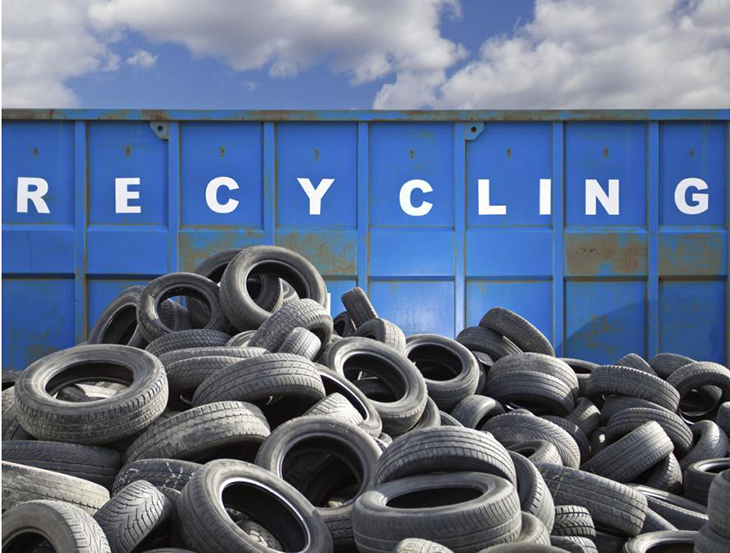
Engineers at the RMIT University in Australia have found that using rubber from old and used tires actually works like sunscreen for roads, halving the rate of sun damaged with a mix of bitumen.
Their new research, which had them create a bitumen blend that is UV-resistant, while being able to withstand traffic loads at the same time. This may even have the potential to save governments millions of dollars on road maintenance every year.
In contrast to other outdoor structures, like outdoor furniture or playground equipment, roads are not specifically designed with sun protection. Because of this, roads are prone to cracking, making them pretty unsafe to drive on in certain situations.
By incorporating recycled rubber in the roads, it offers sun protection while becoming a more sustainable solution to the used-tire crisis that many countries are dealing with, including Australia, which has put an export ban on used tires since December 2020.
Although there has been a lot of research that has focused on the improvement of durability of roads when it comes to traffic load, weather-related events, sun damage, and thermal ageing are not topics that have been given much attention, until now at least.
Working As Sunscreen for Roads
The new study, which was led by RMIT’s Associate Professor Filippo Giustozzi, is now providing a sustainable solution to UV protection for the roads.
Giustozzi shared, “We found that the ageing trend is actually slowed down when you add crumb rubber, which is recycled from scrap tires, into the top layer of a road.”
He added, “This acts so effectively as a sunscreen for roads that it actually makes the surface last twice as long as regular bitumen. We knew that UV would be a factor in road degradation, but not by what degree or how to protect against it, as nobody has really been looking at this aspect.”
RMIT happens to be one of the few universities in Australia that has a UV machine for use in asphalt studies. The machine can stimulate weather-related ageing, while also being used for testing outdoor furniture paints.
Giustozzi and his team used the machine ‘to stimulate the long-term effect of solar degradation in the lab on bitumen with different concentrations of crumb rubber: from a low concentration of 7.5% to a medium of 15% and a high of 22.5%.’
The team measured the changes in bitumen’s chemical and mechanical properties after a month and a half of continuous exposure in the UV machine, which is equivalent to around a year of UV radiation in Melbourne, Australia.
According to Giustozzi, the bitumen mixed with the high concentration of crumb rubber from recycled tires resulted in 50% less UV damage as compared to the regular bitumen.
Giustozzi also shared that although using more rubber was better in terms of UV resistance, it was also important to balance that out with the mechanical performance as well.
He shared, “You don’t want something that is UV resistant but not truck resistant. We found adding between 18% and 22% of crumb rubber generates an ideal balance in terms of improving rut and fatigue resistance to traffic loads, while resisting UV ageing.”
Finding a Sustainable Solution To the Used Tire Crisis
As for Lina Goodman, CEO of Tyre Stewardship Australia, she said that while Australia produces around 450,000 tons of end-of-line tires in 2021 alone, only around 70%of those tires were actually reprocessed or recycled.
Goodman also shared that they were inspired by the research, which showcased major viability and benefits of using crumb rubber from end-of-life tires, especially since they have benefits for both the roads and civil infrastructure, as well as over a number of different sectors.
Goodman shared, “We’re excited to collaborate on this project with industry and leading researchers at RMIT University. A multi-organizational approach paves the way for new innovation and the opportunity to turn this resource into a value-added product.”
Giustozzi also said that another advantage of crumb rubber is that it’s something that’s widely used, including being used in some roads, despite the councils and state authorities not being aware of the ‘sunscreen’ effect that was found during the research.
“We hope this research will change that and open new opportunities,” he added.
You can see the results of the study in the Journal of Cleaner Production.
What are your thoughts? Please comment below and share this news!
True Activist / Report a typo


